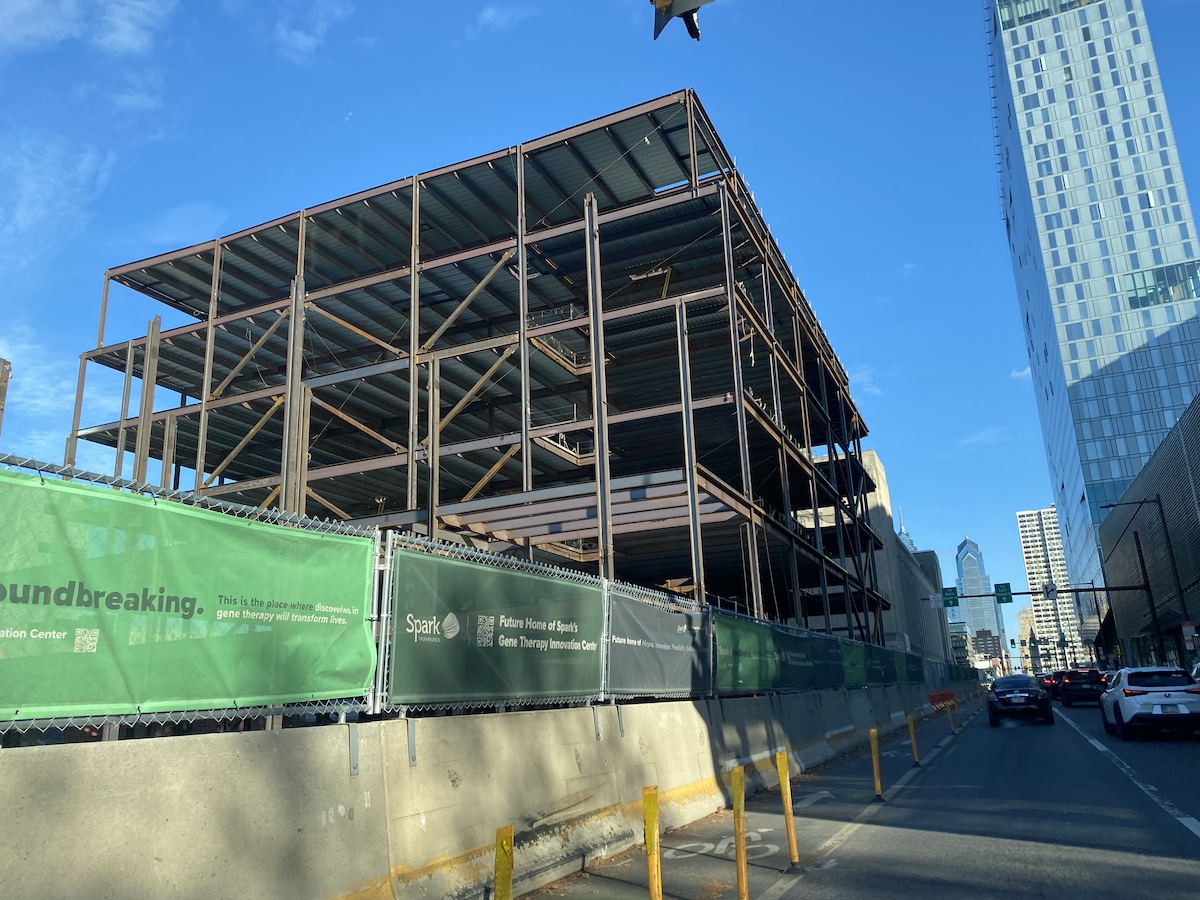The cell and gene therapy company broke ground on the site of the soon-to-be 500,000-square-foot building this spring, with a targeted completion date of 2026. The company is behind the first FDA-approved gene therapy, Luxturna, which was approved in 2017. Spark is also notable for its acquisition by Roche for $4.8 billion in 2019, which is Philly’s largest-ever VC backed exit.
Spark’s new hub is an investment in its future in Philadelphia, according to its leaders.
“Located in West Philadelphia, in the heart of University City with close proximity to leading universities and health systems, our Gene Therapy Innovation Center will bring hundreds of the greatest minds in gene therapy together under one roof and also serve as Roche’s flagship center of excellence for gene therapy manufacturing globally,” said Denise Bradley, head of corporate communications and community engagement at Spark, via email.
Meeting the moment

Biotech and life sciences have been celebrated locally for decades, largely powered by university tech transfer and established pharma presence. Lately, Philly’s gene and cell therapy focus has emerged as that field has had a reawakening, only sped by COVID-19 research.
Further bolstering that reputation, in late October, the Philadelphia region was named as one of 31 EDA Tech Hubs for its prowess in precision medicine, aka medical treatments that are personalized using data such as genes. The designation signifies Philadelphia’s potential to become a global competitor in high-tech manufacturing.
Other recent markers of the industry’s success: Startup-supporting University City Science Center was named one of the Advanced Research Projects Agency for Health (ARPA-H) network spokes and earned big funding from the National Health Institutes. The BIO International Convention will return to Philadelphia for a fifth time in 2027. Real estate services firms JLL and CBRE consistently rank Philly among the 10 best life science markets in the country. The US Department of Health and Human Services secretary visited Sen. Bob Casey and the Chamber of Commerce for Greater Philadelphia last year to discuss the local life sciences industry.
And on and on.
Philly is so unique when it comes to life sciences, a dozen experts told Technical.ly this fall, because of its combination of proximity to resources and collaboration that the city offers. (“Life sciences” means any work that relates to living cells, including industries like pharmaceuticals and biomedical technologies.)
Philly has all the pieces for a strong life sciences ecosystem, plus the support of various stakeholders in the region. The linchpin appears to be that these local companies, research institutions and economic organizations are all working together to grow the workforce and real estate needed to attract and retain companies.
Philly’s selling points
First: How did Philadelphia develop its reputation for the life sciences?
Research institutions are the chief contributor to the industry’s local legacy, said Sam Woods Thomas, senior director for business attraction and retention for the City of Philadelphia’s Department of Commerce. University of Pennsylvania and Children’s Hospital of Philadelphia (CHOP), for instance, have been home to notable researchers in the cell and gene therapy field such as Katherine High, who was a cofounder of Spark, and Albert Maguire and Jean Bennet, who both developed Luxterna.
Philly is also home to the first CAR T-cell therapy approved by the FDA, Kymriah, in 2017. This CAR T-cell therapy for advanced blood cancer was developed by Carl June, the Penn oncologist and researcher who went on to win the prestigious Breakthrough Prize in Life Sciences for this work.

There are four components to a strong tech hub, according to Thomas: institutions, talent, venture capital and real estate. Philly understands the importance of all four.
Respected research institutions such as Penn, CHOP, Drexel University and the Wistar Institute are all producing talent who (increasingly) want to stay and work here. Access to venture capital is important to ensure companies can grow here — and life sciences accounted for a fifth of Philly’s VC funding last year, when more Philly companies got VC from outside investors than ever before. Real estate matters because life sciences companies need a specialized type of office in the form of wet lab space; according to CBRE’s most recent Tech-30 report, University City is in the top 10 submarkets among North American tech hubs for rent growth. The neighborhood had an 8% increase in average asking rent over the last two years.
As companies grow, developers can meet the need for expanded room, from incubators to “graduation” space to “good manufacturing practices” hubs where products can be developed at scale, Thomas said. Once you reach the manufacturing stage, there are more opportunities to create jobs and create more equity and inclusion in the life sciences workforce (more on that later). The fact that a company can stay in Philadelphia as it grows and have its needs met is a point of attraction for many of them, he said.
Sections of Philadelphia have become known as mini hubs within the city for life sciences companies. University City allows proximity to health systems and universities while also only being a short distance away from the Navy Yard in deep South Philly, where companies might move when they reach the manufacturing stage.
Rebecca Grant, director of life sciences and biotechnology for the City’s commerce department, said she doesn’t think the natural growth of the industry would’ve happened in Philly if all of these resources were not as close to each other.
“My earliest years of research were in viral gene therapy, and just having people so close, in the same building or down the street, I mean, the collaborations that were able to happen even to get that first FDA-approved gene therapy on the market,” she said of her own experiences at Penn — “that close proximity and all of us being able to work together was amazing.”
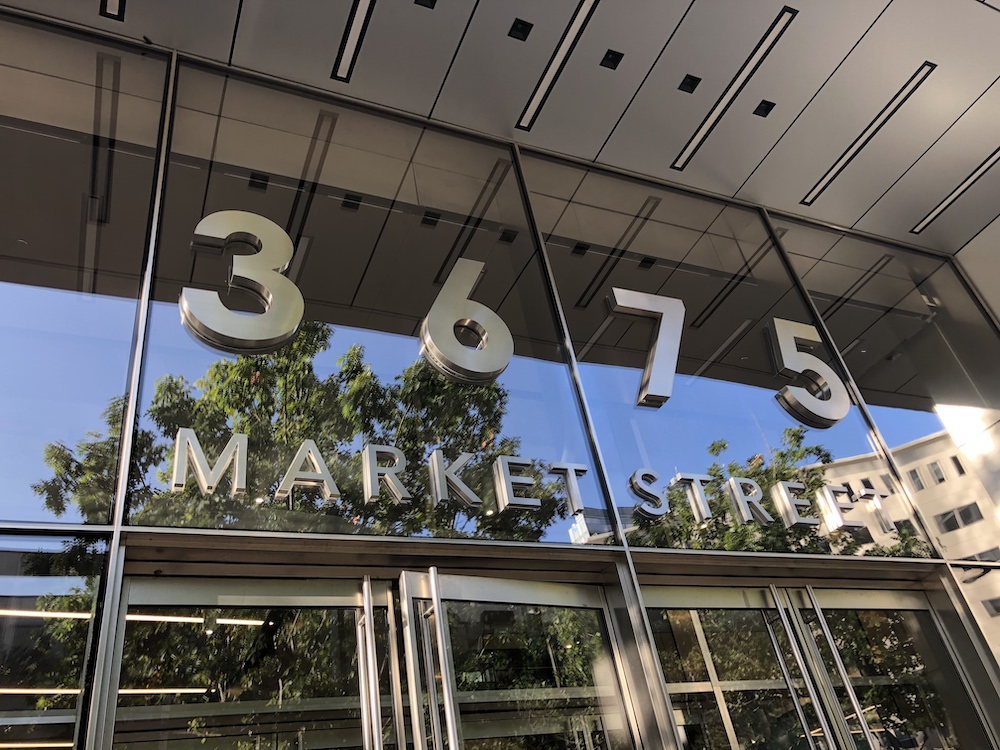
Collaboration among industry stakeholders
Another big selling point for the region is that local government aims to be accessible, according to Thomas: “The entire commerce department, in fact, is really good at doing business community engagement,” he said, “and I think that sets us aside from other local governments.”
Leaders within city government reach out to businesses in Philadelphia at events such as Venture Cafe, held weekly at the Science Center, or through King of Prussia-headquartered advocacy group Life Sciences PA as well as national conferences, and meet with life sciences companies from all over and pitch them on why they should come to Philadelphia. Thomas said the Department of Commerce staffers try to be proactive by reaching out to companies they know are thinking of moving here or who want to expand, and showing them the benefits of moving to or staying in Philadelphia.
There are four components to a strong tech hub: institutions, talent, venture capital and real estate. Philly understands the importance of all four.
Bryan Tsao, manager of life science and healthcare initiatives at the Chamber of Commerce for Greater Philadelphia, said the Chamber’s job in these instances is to bring together all the important stakeholders — say, for initiatives such as the ARPA-H national health innovation network and EDA Tech Hubs application.
The Chamber has only been specifically focused on promoting the life sciences industry since 2019, and at the time focused only on cell and gene therapy, Tsao said. Its leaders are now expanding their reach to industries that support cell and gene therapy, such as nanoparticles, immunology, oncology and prep chemicals.
“Once we identify a prospect that wants to move into the region, then we connect them to site selectors,” he said. “We connect them to real estate developers, we connect them to labs, different companies in our region, consulting companies, architecture companies, law firms.”
The three main talking points the Chamber uses to bring companies to Philadelphia: affordability, proximity of life sciences companies and universities (that should sound familiar), and concentration and diversity of clinical trial patients.
University City-based Spirovant is developing adeno-associated, virus-based gene therapies for cystic fibrosis. CEO Joan Lau said part of the reason the now-40-person company has remained in West Philly since 2016 is because of the proximity to talent. And the reasons there’s so much talent here, she said, are the academic institutions in Philadelphia doing gene therapy research plus the drug developers nearby.
“Truly the most important asset for any company are the people,” Lau said — “the people who are terrific scientists and understand the biology, the chemistry, the drug developers, and the people who buttress all that effort [such as accountants and lawyers]. I believe that the talent in Philadelphia is particularly special, is unsurpassed by anywhere else.”
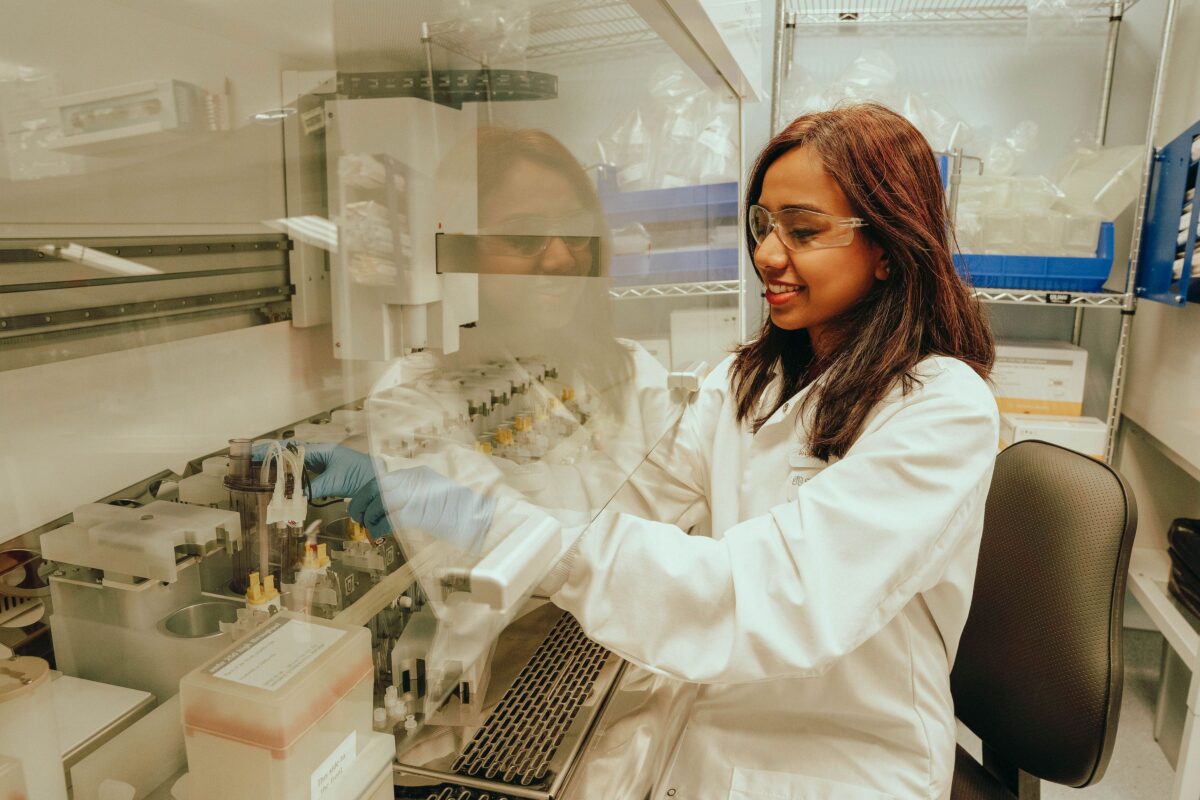
Philadelphia also maintains a “dynamic environment” of companies of different sizes and with different backgrounds doing unique work here, she said. This leads to opportunities for workers to choose what they want to do — they’re not stuck with one employment option in their field, which could otherwise lead them to move somewhere with more job options — and for company leaders to collaborate with other companies.
The Chamber of Commerce, the Department of Commerce, the Science Center and others are all organizing programming and encouraging interaction between companies, Lau noted. It’s helpful for her to hear from other company executives, even if their research isn’t exactly the same.
“There are talks and seminars given at Wistar or Penn or CHOP, and so our team can walk over there,” Lau said. “If you want to meet with an academic, someone who’s deeply knowledgeable, you can meet at the food court and sit down and talk. If you want to collaborate with another company, you can walk down two flights of stairs or walk across the street.”
Workforce development
When considering moving to or staying in Philadelphia, Thomas said companies usually ask if the city has the space and the workforce necessary to grow. That’s especially true as the Philly region is on track to add thousands more cell and gene therapy jobs in the next 10 years — somewhere between 7,608 and 11,274 jobs, to be exact, per a 2020 report.
Supporting the creation of new jobs in the industry also promotes equity in scientific fields, Grant said. People who did not receive a college education can still get a job in a lab and earn a family-sustaining wage, which matters a lot in the poorest big city in the country. They can also build a long-lasting career at a company that could lead to promotion or opportunities for higher education.
Stakeholders such as the Science Center’s Phil Brooks and partners at Wistar, the West Philadelphia Skills Initiative and more have been doing that upskilling work here for years, and biotech entrepreneur Tia Lyles-Williams said last fall that her HelaPlex, a Philly life sciences workspace coming to Southwest Philadelphia, was planning a pilot program — the HelaPlex Biotechnology Workforce Development Training Program — to train people trying to get into the life sciences field. Other programs such as the Science Center’s short-term Building an Understanding of Lab Basics, aka BULB, teach biotech basics to Philadelphians and don’t require a degree for participation.
Brooks and Lyles-Williams both then said anyone can build a career in the industry, not just those with Ph.D.s or people who look a certain way or come from a certain background. But Brooks noted a lack of communication between life science companies and the rest of Philadelphia: Companies know what they need, but the community doesn’t know of the opportunity.
“We sit down in meetings,” Brooks said about life science companies, “we have research, we do all these amazing things. But now it’s time to act. We have the information at our fingertips.”
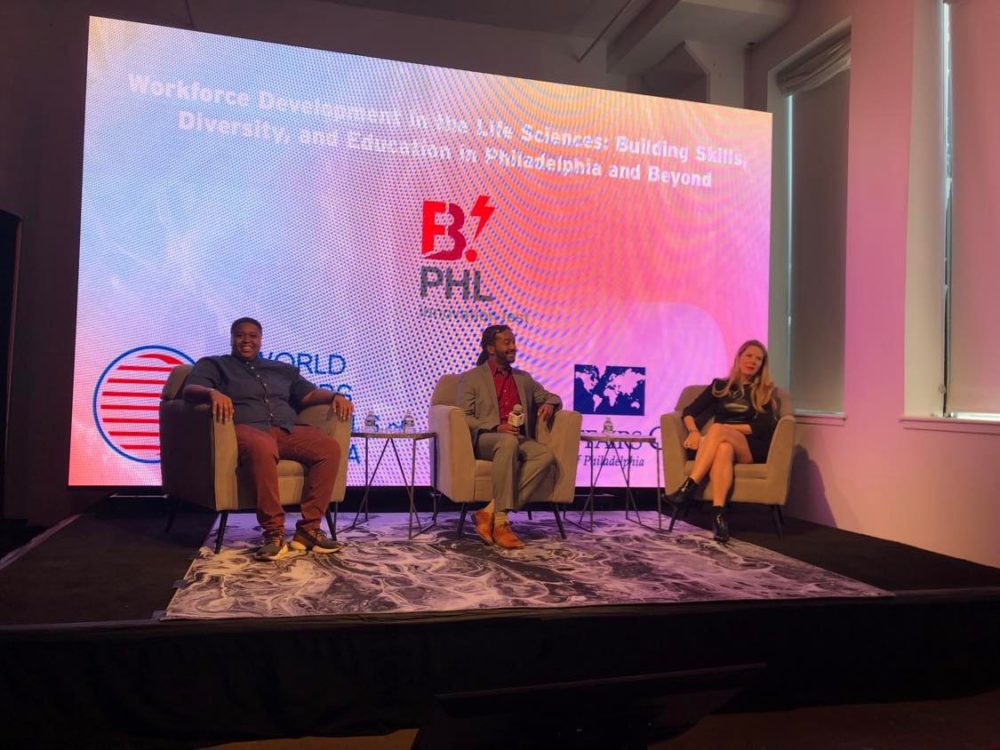
In 2020, the Chamber formed the Life Science Talent Pipeline Collaborative to convene employers to discuss challenges and best practices for life sciences talent. The collaborative supported the application for a $23 million grant from the EDA’s Good Jobs Challenge. University City District’s West Philadelphia Skills Initiative was chosen to lead the life sciences area of this grant.
It’s important to keep investing in life sciences because of the economic impact on the region — a one to four return on investment, Tsao said. The industry can have an impact on Philadelphia residents of any education level or income level, especially because of these workforce development programs training people to work in life sciences-related jobs without a higher degree. Life sciences growth also impacts other industries, such as construction.
“We really need to energize the adult workforce of our region,” Tsao said. “And that’s one example of why we need to keep investing in this industry because it really helps people get good-quality jobs. These are high-paying jobs as well, compared to some of the other industries. And if we invest in the cell and gene therapy industry, we will bring a lot more money into the region.”
BioAnalysis is a contract research organization focused on analytic testing in the cell and gene therapy industry. For its president and founder, Lake Paul, the main benefit is access to talent from local universities. Programs like Wistar’s Biomedical Technician Training program add to the talent pool, too.
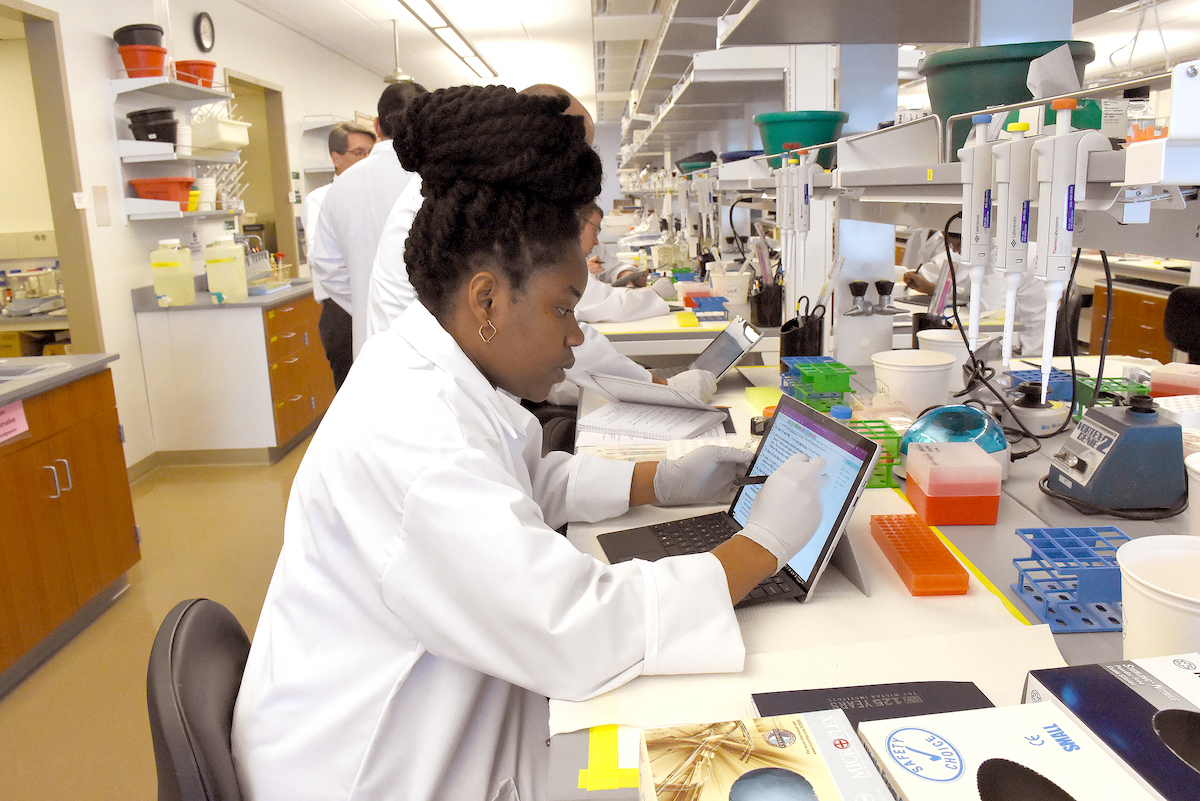
University City is where most of the Philly life sciences community’s workforce development action is. But BioAnalysis is based in formerly industrial Kensington — not often thought of as a STEM hub in any form. Paul wants to draw more attention to this area and bring opportunities for high-paying jobs to the neighborhood.
“We want to bring more attention to that area,” Paul said. “So, we have a lot of community outreach programs in that area that we participate in, so we really want to shine a light.”
Location and real estate
Indeed, the life sciences in Philadelphia are largely concentrated in University City and the Navy Yard, but there are additional centers popping up in Kensington, South Philadelphia and Center City, Thomas said. The most prominent example may be the 1,300-acre space currently in development in South Philly: Previously an oil refinery, the hub slated to become the Bellwether District, an innovation campus that will include space for life sciences, tech and healthcare companies.
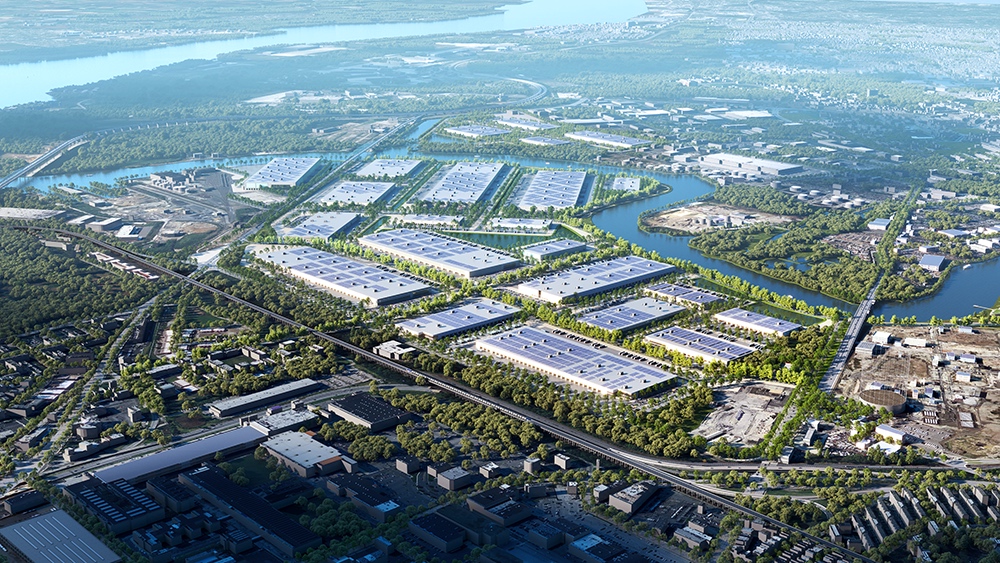
The Philly region overall is well situated so that someone can start a company at Penn, go through the incubation and graduation stages in University City, and move to the manufacturing stage at the Navy Yard. Each of the stages a company goes through while growing requires a different type of real estate, Thomas said.
“That sort of plurality of real estate options and density of real estate options is something that a lot of other cities can’t offer,” Thomas said. “A, because they don’t have the lab space to offer and B, because they might be a little bit too sprawling.”
Development company Wexford Science and Technology has been working in Philly for 17 years. John Grady, the org’s SVP northeast region executive, said Wexford has developed a little over 2 million square feet of labs, offices, academic space, clinical space and residential space in what it calls uCity Square.
In 2014, the company partnered with Drexel, acquired the former University City High School site and combined it with the Science Center’s property to develop the uCity Square research park. This fall marked the opening of One uCity Square, one part of the project including the 13-story building at 37th and Cuthbert streets that’s now home to cell and gene therapy companies such as Century Therapeutics, Exponent and Integral Molecular.
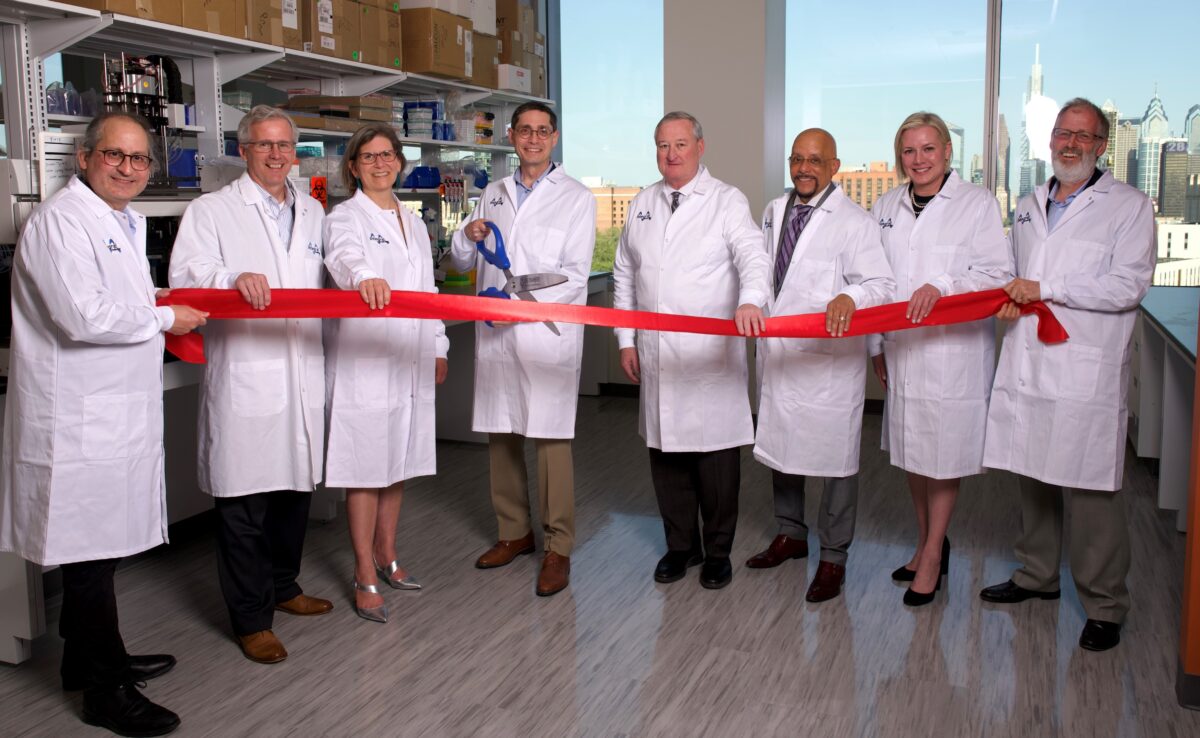
uCity Square’s proximity to universities, research facilities, medical centers, public transportation and other amenities makes it ideal for a collaborative life sciences community, Grady said.
“What really makes any innovation district, or a ‘knowledge community’ as we call them, really successful and vibrant is the ability to bring different people together so that they can collaborate, so they can learn from each other, so that you can attract and retain and grow a talent base,” he said.
The next part of the uCity Square project will be a lab office building at the 3800 block of Market Street. Wexford is also planning two more research towers around the public square and a new hotel in the area.
While Wexford’s work is focused in University City, Grady has plenty of experience working at the Navy Yard, when he previously led the Philadelphia Industrial Development Corporation. He said Greater Philly is unique among global life sciences hubs because it contains different environments such as University City, the Navy Yard and even the suburbs such as King of Prussia and Malvern.
“I think these different environments are really important for Philadelphia. Not everybody wants to be in a high-rise building,” Grady said. “We continue to see that element of the larger ecosystem is really important as young companies emerge, and they move from scientific leadership to commercial leadership.”
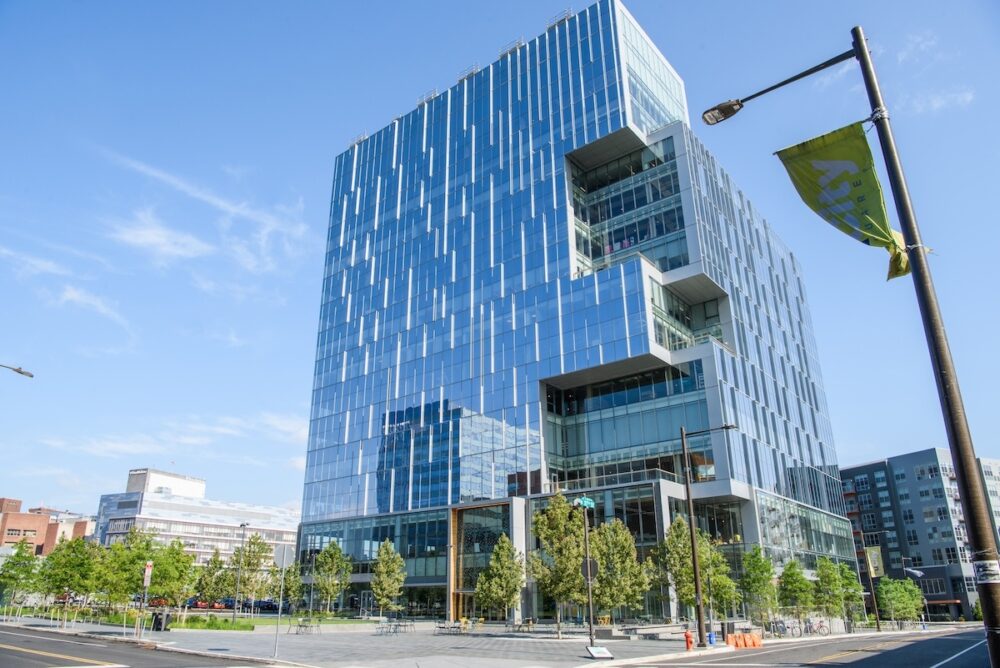
Where Philly goes from here
Philly’s Tech Hubs designation wasn’t the end of the Tech Hubs program: The 31 regions that received a designation have now entered Phase 2 of the application process, when they can apply to receive between $40 million to $70 million each to grow their tech manufacturing efforts. Funding and further recognition is not guaranteed.
In the meantime, organizations such as Wexford, the Chamber of Commerce and the Department of Commerce are committed to supporting life sciences companies and continuing to build out the industry in the region. That support will attract more companies to the area and provide more opportunities for Philadelphians to get high-paying sustainable jobs. Philly needs to continue investing in the real estate and workforce development programs needed to support young life sciences companies.
It’s a virtuous cycle.
It’s also “uniquely Philadelphia” for so many stakeholders to come together to create programs that promote inclusivity in an industry, Grady said. Those opportunities start in high school and encourage young Philadelphians to become interested in STEM, said Grady, noting the Science Center’s FirstHand program for high schoolers.
Whether those students head next to a university lab, a Wistar training program, or stay in the Science Center for upskilling or entrepreneurial support — who knows? The founder of the next Spark Therapeutics could be sitting in a Philly classroom right now.

